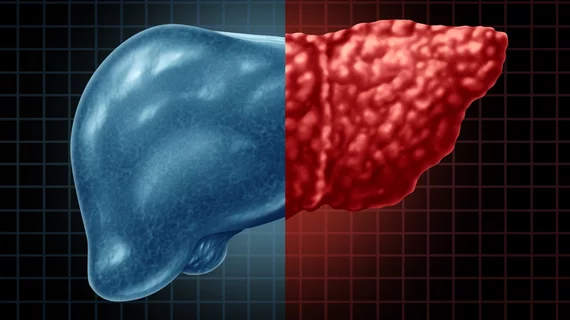Radiologists issue ‘call to action’ on looming liver disease ‘crisis’
Radiologists on Thursday issued a “call to action” on fatty liver disease, urging the specialty to get more involved in addressing this clinical concern.
Since its emergence in 1980, fatty liver disease has grown in prevalence, mirroring rising global rates of obesity, experts wrote in the journal RadioGraphics [1]. It also has been the subject of “extensive” research, unearthing insights into how the disease progresses.
Imaging plays an “essential” role in diagnosing, monitoring and managing such “metabolic dysfunction-associated steatotic liver disease.” However, the specialty has remained largely on the sidelines amid this progress. Since 2010, experts have released 30 different clinical practice guidelines and consensus statements on hepatic steatosis. Yet, of 459 unique authors, only two have been radiologists, with zero involvement from radiology specialty societies.
Radiologists believe this form of liver disease will present a “major threat” to the healthcare system, economy and society in the coming decades.
“We call on the entire house of radiology—radiologists, technologists, administrators, researchers, industry and radiology societies—to take action,” Sedighe Shabanan, MD, a Stanford University School of Medicine resident, and co-authors wrote Oct. 17. “Demand a seat at the table with other societies, and advance the development, validation, dissemination and accessibility of the technologies needed to confront the looming crisis,” they continued.
Confronting this “global threat,” they contend, will require research to address gaps in knowledge, improvements in screening and diagnostics, multidisciplinary guidelines and “unprecedented” cooperation between policymakers, industry, academia and others.
Their pictorial review offers some pearls for radiologists to begin getting involved. It covers the recent name change to MASLD, spectrum of the disease, imaging methods for monitoring fatty liver disease and six unsolved assessment challenges.
Metabolic dysfunction-associated steatotic liver disease is the most common chronic ailment of the organ, now impacting one-third of the global population. The burden is only expected to rise, with some projections suggesting it will affect over 55% of the population by 2040, Mayo Clinic radiologist and liver disease expert Sudhakar K. Venkatesh, MD, wrote in a corresponding editorial [2]. MASLD also is a growing cause of end-stage liver disease and a “significant drain” on healthcare resources, he added.
Venkatesh also urged radiologists to get involved in addressing this concern. Members of the specialty could do so by working with healthcare economists to assess the cost-effectiveness of imaging-based approaches, “providing valuable data for decision-making regarding screening programs. They also can collaborate with experts in AI and deep learning to establish more accurate and automated analysis of related images, “reducing interpretation time and improving workflow.” Physicians also can leverage their expertise to advocate for public health initiatives aimed at reducing the disease burden.
“By embracing these various roles, radiologists can significantly impact the fight against [metabolic dysfunction-associated steatotic liver disease],” Venkatesh concluded. “As the field of medical imaging evolves—with advancements in artificial intelligence, machine learning, and new imaging techniques—the expertise of radiologists will be even more crucial. They can play a leading role in developing and validating these tools, ensuring their accuracy and integration into steatosis management protocols. Ultimately, radiologists have the potential to become true stewards of MASLD, ensuring timely diagnosis, optimized treatment decisions, and improved patient outcomes in the battle against this growing global health concern.”

